Small Binoculars & Spotting Scope for Hiking, Backpacking & Bikepacking
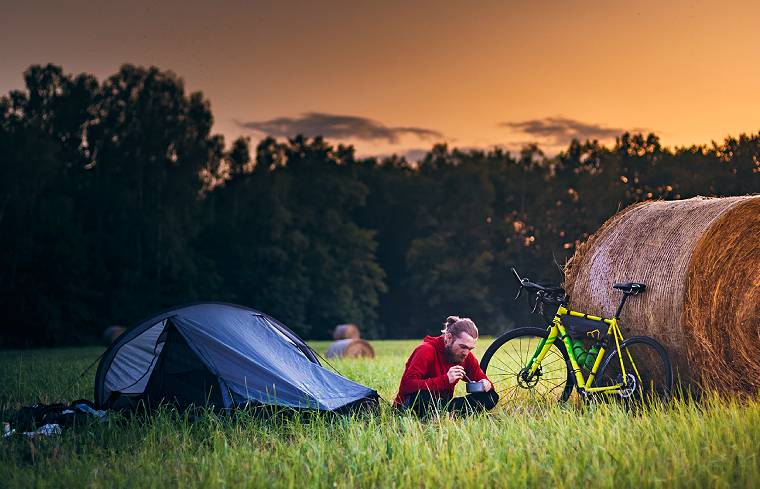
Why I chose this particular Compact Binocular & Spotting Scope combination for Backpacking & Bikepacking trips. Also includes alternatives & other advice:
Summer is almost upon us here in the Northern hemisphere and due to the ongoing travel restrictions due to the virus, this year we have decided to holiday nearer to home and stay away from more populated areas. Luckily where I live in Southern France this is not only possible but there is no reason why we can enjoy ourselves just as much as if we were to travel thousands of miles away as I often do when going back to my original home in Southern Africa.
So with this in mind, I have two trips in mind and am in the planning phase of both. Firstly as a family, we are going to go on a two three day, two-night ultra-lightweight hiking/backpacking and camping trip in a protected forest area not far from where we live, and then secondly, I plan on going up into the Pyrenees mountains on my bike and camping overnight in July and hopefully catch a stage of the Tour de France as it passes by.
Now for both of these trips, I have much of the equipment at hand already and for those who are interested, I will list some of them, but obviously, for the purposes of this article on BBR, I will be focussing on the binoculars I have chosen and, perhaps more surprisingly, a spotting scope that I plan on taking with me and why!
Why Binoculars – Intended Uses
Nature Observation
On both my planned trips there, we are visiting very scenic areas with the potential to view a good amount of birds and other larger wildlife including things like deer and foxes, as well as not forgetting the smaller stuff at nearer range like butterflies and dragonflies.
Recon & Scouting
If you only consider the reasons for nature observation listed above then for me taking a pair of binoculars is already a no-brainer. However, as I/we will also be venturing off the beaten path, then a pair of binoculars can also be a useful tool for things like scouting terrain up ahead without having to walk or cycle all the way there only to find that the path comes to a dead end.
Astronomy
Most of us spend most of our evenings and nights tucked always safely indoors and as such, unless we make an effort to go outside, it is not that often that we look up at the night sky and enjoy the view of the stars, galaxies, planets or even our own moon.
On both trips I will be camping out under the stars and so is a great opportunity for a bit of astronomy and is certainly something I can enjoy with my daughter without the distraction of a television!
So even though compact binoculars and spotting scopes are far from the ideal choice for astronomy as large instruments with big objective lenses are better able to collect what little light there is, it would not be feasible to carry these and so sometimes you just have to make the most of it and keep in mind that even a small compact will usually allow you to see more stars than what you could with the naked eye.
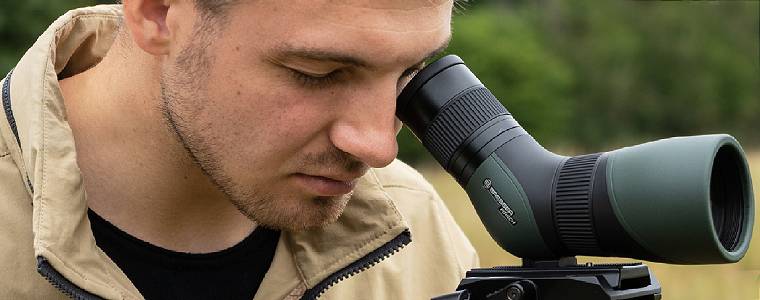
Why a Spotting Scope – Intended Uses
My intended uses for the spotting scope are actually pretty much the same as that of the binoculars, it is just that a scope has its own particular advantages (and weaknesses) compared to a binocular, and thus I see it as a complementary instrument and one which I will most likely use more when I am at a stationary point for a longer period of time – like at camp or at a picnic spot, etc.
Advantages of Spotting Scopes vs Binoculars
More Powerful and with Variable Magnifications
In order to keep maintain a good balance between the field of view, image detail as well as low light performance, the binoculars I choose will most likely be 8x or perhaps 10x which is perfectly fine and ideal for use from the hands.
With a spotting scope, I will have variable magnification, and depending on the one I choose (see below), it will probably range from 9x up to 27x, which is a popular choice of eye-piece for a travel scope.
This will help me gain that extra image detail when I’m up in the hills/mountains of that eagle perched on a cliff face (here is hoping!).
Light Gathering & Low Light Performance
As the binoculars that I will be taking will be small with small objective lenses, it will be nice to have an instrument with a larger lens that is better able to capture light and thus can work out better in low light situations. This will be especially true at sunrise, sunset, and indeed at night for astronomy. All of these times, I will be stationary in camp and thus plan to have my scope set up and ready to go.
Disadvantages of Spotting Scopes vs Binoculars
Size & Weight
Once again, in the context of my hiking and camping trips, a downside to a spotting scope, even a very small, travel-friendly one is that whilst it won’t be that much different from a full-sized binocular, it is still going to be a fair bit larger than a compact binocular.
Tripod / Monopod Required
The other drawback to taking a spotting scope on an adventure where space and weight are at a premium is because of the higher magnifications and just how they are designed to be used (usually with the angled eyepieces), you really do need to mount them onto a tripod/monopod in order to get the best out of them.
Now as I will be filming for the BBR YouTube channel, I will have a tripod or monopod with me anyway, so for me, this is not an issue, but for others, this may certainly be something to keep in mind. Although there are some excellent very lightweight tripods out there or you could even go for a monopod that can double as a walking pole.
You can see what I use here: My Tripods for Binoculars & Spotting Scopes
So I guess, strictly speaking, if I wanted to keep my pack as small and lightweight as physically possible, the spotting scope would stay at home, but I do feel that I have space and so want to enjoy the extra benefits that it brings and besides, it also just happens that I have the perfect scope in mind and thus want to test it out!
Which Binoculars & Scope
So where I just always begin when deciding which binoculars to use is to now take a look at the intended use(s) and then decide what are the most important features they need to have in order to perform at the level and in the way that is required:
Must Have Features
Size & Weight
Most certainly, the main, underlying theme of both these trips is small & lightweight as I will either be carrying all my gear on my back in a backpack or in a number of small bags attached to my bike. Thus it is, without doubt, the most important feature of the binoculars and the scope is to be both small and lightweight and it is for this reason, I restricted my search to compact binoculars (objective lenses less than 28mm) and the scope to the very small “travel-friendly” options that usually have an objective lens of around 50mm to 60mm.
Although having said that and this may apply to you: If I was not taking a spotting scope as well as binoculars, then I would have also considered mid-sized binoculars (objective lenses between 30mm and 36mm), as their larger objective lenses would help me in low light situations and especially for astronomy, however as I am taking both, I will mostly rely on the spotting scope in poor light.
Versatility
For these trips, I need my binoculars and spotting scope to be as versatile as possible as not only will I be taking in long-distance views when up in the hills and mountains, but will be observing things at closer ranges like birds in wooded and forested areas where light is also bound to be less than ideal.
Magnification (image detail), Field of View & Low Light Performance
Here as always, there is a tricky balance to be made between achieving a good level of image detail (the amount of magnification) at distance (especially in open fields, in the hills and mountains) versus maintaining a wide field of view and reasonably good low light performance that will help with locating and following small fast-moving objects like birds at closer ranges and in sub-optimal light conditions like in forests for example.
Thus as I knew that the objective lenses on the binoculars were going to be fairly small so as to keep the overall size of the instrument to a minimum, it meant that in order to maintain a reasonable exit-pupil size and thus offer the chance of a decent low light performance, I was going to have to sacrifice a little image detail at distance and keep the magnification down.
The positive side of this is because you are less “zoomed-in”, the field of view tends to be wider on a lower-powered optical device.
Minimum Focus Distance
On top of this, because we (especially my daughter) are interested in butterflies, there is the need for an instrument to be able to focus at a very close range.
My Choice of Binoculars
Pentax Papilio II 8.5x21 Binoculars
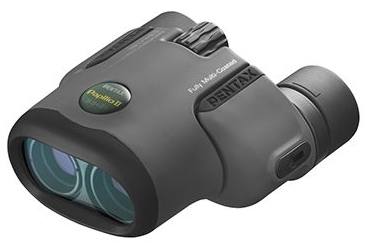
So after quite a bit of research and much deliberation, I decided on the latest version of Pentax’s truly excellent Papilio binoculars, as apart from one slight negative (see size below), I felt that they fit my requirements very well.
Pentax Papilio Binoculars
I tested the previous incarnation of this binocular many years ago (you can read my full Pentax Papilio 8.5x21 Binoculars Review here) and to this day it remains one of my absolute favorite binoculars.
Since then Pentax has continued to work on and improve the Papilio and thus I have to admit, the fact that I really wanted to test and use the 2nd generation version did influence my decision to a small degree, but even so, they do have all the features that I was after: Read my Full Review of the Pentax Papilio II 8.5x21 Binoculars.
Important Features & Specifications
- Low-to-Mid Price Compacts: Approx: $129 / £119 / €129
- Fully Multi-Coated Optics
- Aspherical lens elements for edge-to-edge sharpness
- BaK-4 Reverse Porro Prisms
- Twist-up Eyecups with 15mm of Eye-relief
- Minimum Close Focus: 1.6ft (50cm)
- FOV: 315ft @ 1000 yards (105m @ 1000m)
- Angle of view: 6.0°
- Weight: 10.2oz (290g)
- Dimensions: 11.6cm x 11cm x 5.5cm
Focus Range
When it comes to the focal range, the Pentax Papilio binoculars are as versatile as it gets and this is certainly one of the major selling points of this instrument:
I class a minimum focus distance on a binocular of 6ft (1.8m) or less as being excellent on BBR. So, at just 1.6ft (0.5 meters) these completely blow that out of the water and are truly the market leaders in this area.
What is more, Pentax has designed the Papilio in such as way as this extremely close minimum focus distance does not affect it at the other end of the scale and they are just as good as any other binocular at observing objects in the distance, right up to infinity.
Price to Performance Ratio
At the time of writing, the 8.5x21 Pentax U-Series Papilio II Binoculars retail for around $126 / putting them just on the edge of what I class as a low-cost ($50 – $130) instrument here on BBR, yet the level of optics and features exceeds what I would expect at this level and instead they match that of most mid-level binoculars, which is impressive.
Size
Whilst extremely lightweight and still relatively compact, for me the one slight negative is that it is a Porro prism and not a roof prism compact binocular.
Now to be clear, I have nothing at all against Porro prisms, indeed many of my favorite binoculars use Porro prisms as they have some optical advantages over roof prisms, especially at the low-to-mid price ranges where they will often perform better than an equivalently priced roof prism and which is why I will often recommend them if you are on a tighter budget.
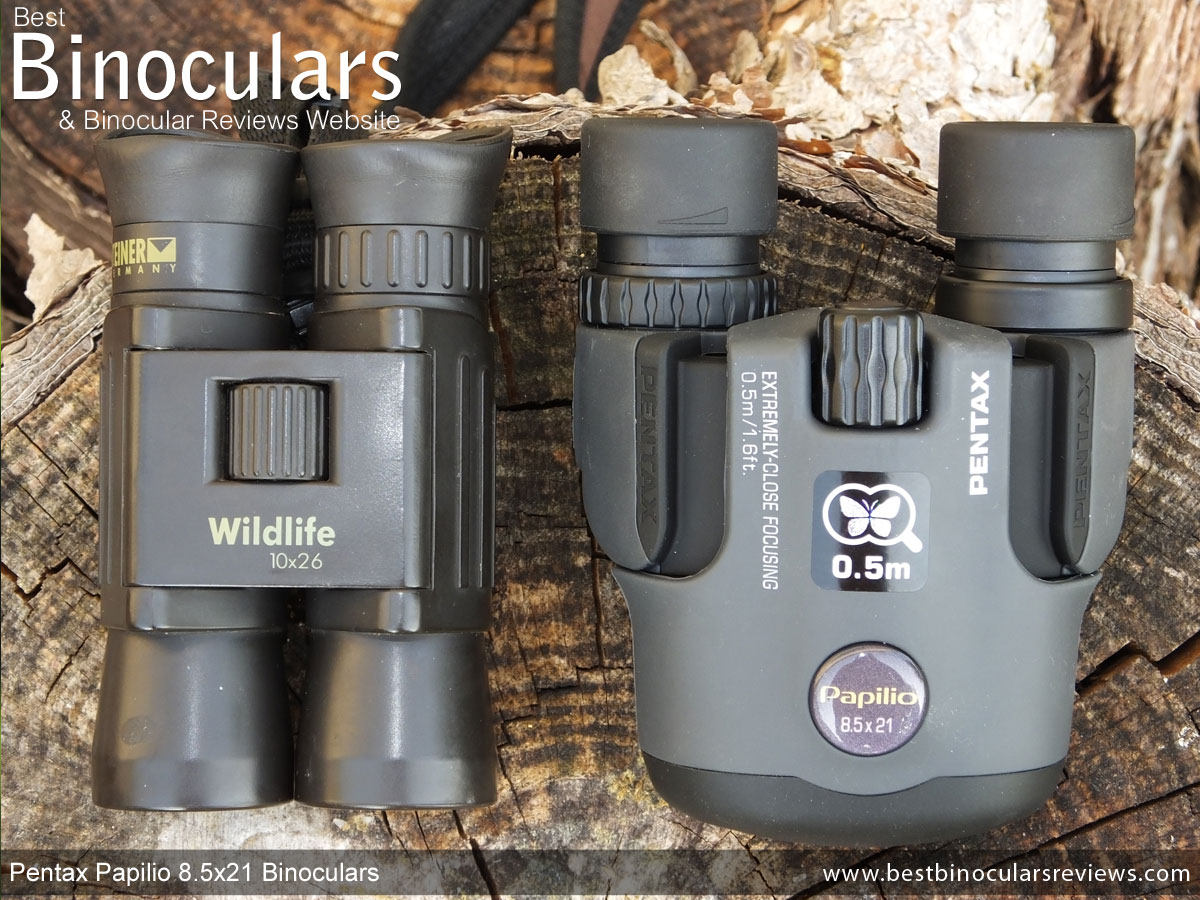
However, the once negative is that the shape of the prism is not as sleek as a roof prism and as such the binoculars tend to be a little bulkier than a roof prism binocular with the same size objective lenses. As well as this, I feel the best design for an ultra-compact instrument are the roof prism ones that incorporate a double hinge design that enables them to fold down into an extremely small, true pocket-sized shape. If you are interested, I go into this in much more detail here: Best Compact Pocket Binoculars.
The trips that I am going on are fairly short and thus I am sure that I will have enough extra space in my packs to accommodate the added bulk of a roof prism compact, however, if your space is extremely limited, then I would suggest taking a look at some of the alternative options below:
My Choice of Spotting Scope
Bresser Pirsch 9-27x56 Gen.II Spotting Scope
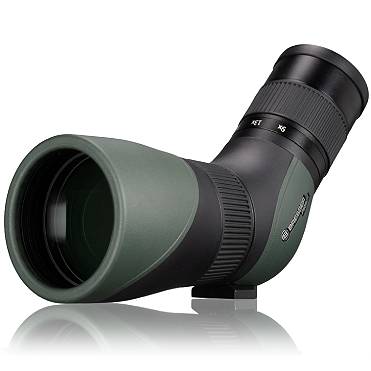
I have now tested and reviewed quite a few binoculars and scopes from the German brand Bresser (see all my Bresser Binocular Reviews and my review of the large Bresser Pirsch Gen II 20-60x80 Spotting Scope) and on the whole, I have always been very impressed, but it is their Pirsch series that for me stands out as offering a really good performance to price ratio and thus when I found out that they had recently introduced an extremely compact version of the Pirsch Gen II 20-60x80 Spotting Scope that I have tested in the past, I immediately checked out the main features and specs to see if it would be suitable for my upcoming trips:
Not that you can get spotting scopes with a smaller 50mm lens (indeed Bresser has their own Condor 15-45x50 Gen. II Spotting Scope), but due to a slightly different design, they are actually not as compact or indeed as lightweight as this 56mm version!
I also decided to go with the Bresser Pirsch as I preferred the option of a lower minimum 9x magnification that more closely resembles a binocular, but with the added flexibility of going right up to 27x when needed.
With this configuration and slightly larger lens, I will also get a larger exit pupil and a better low light performance which is when I envisage that I will mostly be using it around camp and in the evenings for stargazing.
Important Features & Specifications
- 9x to 27x Variable Magnification
- Fully multi-coated optics with BaK-4 glass
- Waterproof Chassis & Nitrogen Purged for Fogproofing
- Dimensions: 20 x 6.9 x 12.1 cm
- Weight: 636 g
- Metal Eyepiece with Twist-up Eyecup
- Tube-Focus Ring
Cost & Where to Buy
With an RRP of 249,00 €, the Bresser Pirsch 9-27x56 Gen.II Spotting Scope looks to me to offer good value for money and I can’t wait to get out there and use them – lookout for my full review coming soon! But if you can’t wait, you can check out their current price and where to buy below:

Note: Whilst the Bresser brand is well known here in Europe, I think it is less so in places like the US and Canada and so if you are struggling to find it, I have listed a couple of alternatives below that I also considered for this trip – the Celestron Humming Bird in particular looks like it would make an almost direct substitution:
Alternative Binoculars
Below are some of the other binoculars which I considered and have fully tested and reviewed. Note that some of these may be more suitable to your specific needs or requirements than the Pentax Papillio that I chose for my needs, but all of which I feel would be an excellent choice for most lightweight hiking, camping, backpacking, or bike backing adventures:
Pentax VD 4x20 WP Binocular / Monocular

Now the fact that I am adding another instrument from Pentax, I understand that it may look a little like I am doing some advertising for them (I assure you I am not!), but to my knowledge, if you want a compact binocular that can focus on objects at just 50cm away and then also go right up to infinity, these I think are your only other option and I have to say that I was very tempted to take this pair instead of the Papillio.
They are a little smaller and because of the fact that they have the unique feature that enables them to be split into two separate monoculars, which would make it a great option to share with either my wife or daughter on the hiking trip.
For uses like butterfly observation and birding in forests at closer range as well as just taking in panoramic views of mountain scenery or even the stars at night, I also really like the low 4x magnification and the wide field of view that comes as a result of this. On top of this, because I am also taking a much more powerful spotting scope, this would have complemented it very well.
However, as I have already tested and reviewed them, I decided against taking them and rather opted for something new, but I do feel that they would make an excellent option, especially if you also have a higher-powered instrument like a scope for the times when you want a little more detail than these can provide.
Steiner Wildlife 8x24 Binoculars

Winner of the award as the best compact binoculars of 2021, these Steiner Wildlife binoculars are one of my favorite compact binoculars of all time, and so if it wasn’t for the fact that I also specifically wanted my compact for observing butterflies at very close range, then these could have easily come along with me and I would have been more than happy with them. Note the Minimum Focal Distance on these is still very good at 2m (6.5ft).
The double-hinge, roof prism design, combined with a tough exterior and fully water and fog proof chassis makes these a true pocket-sized binocular that just ask to be taken anywhere and everywhere you go.
Other highlights include a fully multi-coated optical system, wide field of view, excellent close focus distance, and with their Click-Lock attachment system, has probably the best neck-strap I have ever seen on a compact.
Alternative Scopes
Hawke Endurance 12-36x50 Spotting Scope
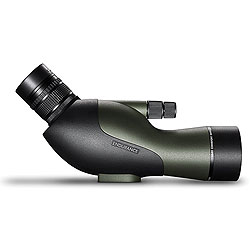 With it’s 50mm objective lens and compact, lightweight water and fogproof body there is no doubting the potential this Hawke spotting scope has as an ideal easily portable or travel friendly companion.
With it’s 50mm objective lens and compact, lightweight water and fogproof body there is no doubting the potential this Hawke spotting scope has as an ideal easily portable or travel friendly companion.
Add to this some really high-end optics that are fully multi-coated and a removable 12x-36x zoom eyepiece and a really close short-focus then you have a very versatile instrument, perfectly suitable for a wide range of applications including lightweight camping, hiking, backpacking, and yes, even bikepacking!
For much more detail and my thoughts on all aspects of this great little spotter, please take a look at my full Hawke Endurance 12-36x50 Scope Review.
Opticron MM3 60 GA ED Travelscope
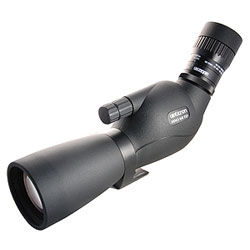 This fantastically small and lightweight 60mm scope from Opticron has to be one of the very best within it’s size and price class anywhere.
This fantastically small and lightweight 60mm scope from Opticron has to be one of the very best within it’s size and price class anywhere.
I make no apologies for confessing that I really loved testing this scope and was blown away by the quality of the view. Sure it may not be quite as small a the Bresser Pirsch, nor indeed be able to match a full-sized scope in terms of low light capabilities which is perfectly understandable, but the quality of the image is second to none.
If you are in the market for a scope like me to take on a hiking or camping holiday or are just looking for one that is far easier to carry about in the field or at home, be that for birdwatching, wildlife observation, or even hunting then I encourage to take some time to read my full Opticron MM3 Travelscope Review.
Celestron Hummingbird 9-27x56 Spotting Scope
 I actually also have this very similar scope from Celestron in for testing and review as well, but unfortunately I only have space to take one of them with me and whilst it was a very close thing, I decided to go with the Bresser.
I actually also have this very similar scope from Celestron in for testing and review as well, but unfortunately I only have space to take one of them with me and whilst it was a very close thing, I decided to go with the Bresser.
However, on my return, I will be testing and fully reviewing this scope along with the Bresser one, so please do stay tuned!
Until then, if you cannot find the Bresser as they can be quite hard to get hold of in North America, but want something with the same 9-27x56 configuration, then this scope is well worth considering.
Where to Buy
Celestron Hummingbird 9-27x56 Spotting Scope.
Further Reading
- Full Review of the Pentax Papilio II 8.5x21 Binoculars
- Compact Binoculars – main section with advice and reviews
- Spotting Scopes – main section with advice and reviews
- Binoculars for Camping
- Best Hiking Binoculars under 100 ($/£)

 Article | Posted by Best Binocular Reviews
Article | Posted by Best Binocular Reviews 
 Categories:
Categories:  Tags:
Tags: 
